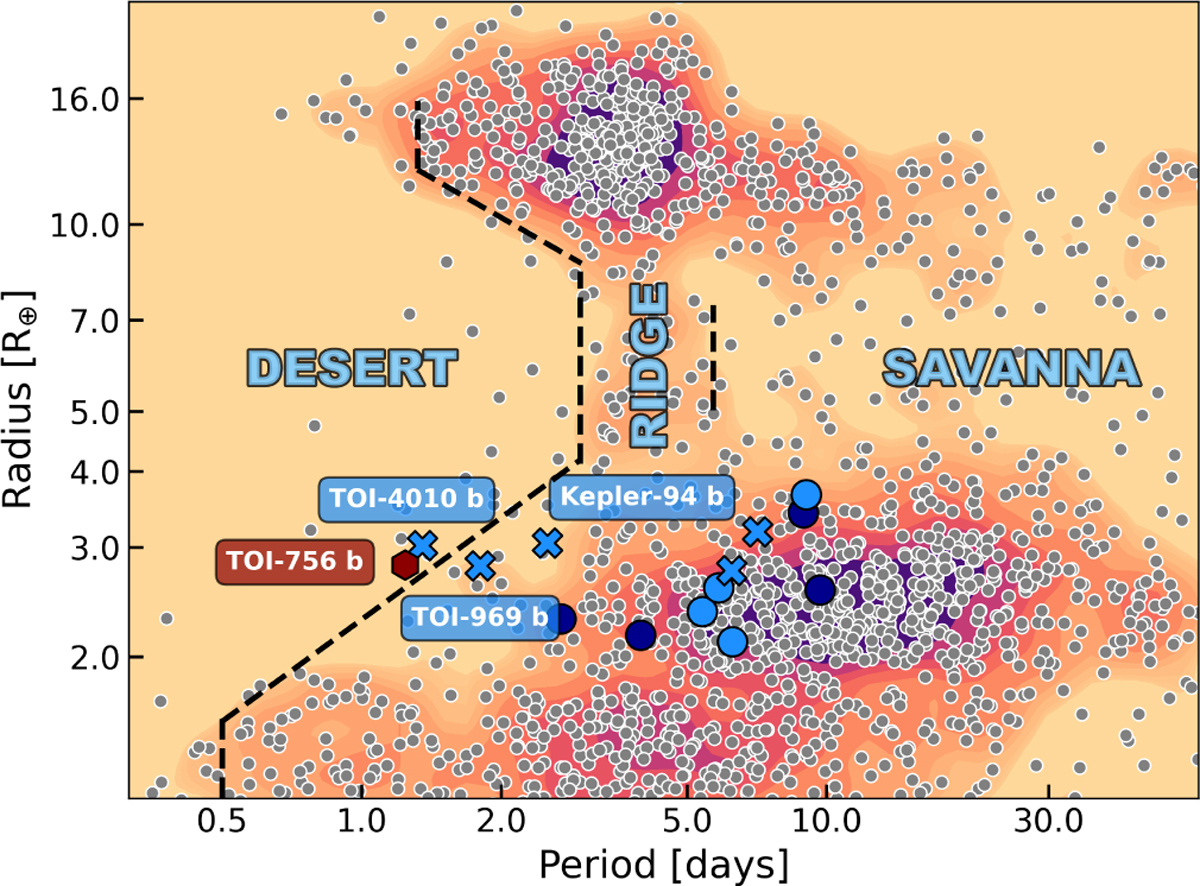Fig. 8

Download original image
Planet radius as a function of orbital period for known exoplanets from NASA Exoplanet Archive with a radius precision below 8%. We highlighted the Neptunian desert, ridge, and savanna regions from Castro-González et al. (2024). The colorcode represents the observed density of planets. TOI-756 b is depicted as a dark red hexagon. Light blue symbols represent sub-Neptunes in systems hosting eccentric giant companions: crosses indicate systems with only giant planets, while circles correspond to systems containing both small and giant planets. In contrast, dark blue circles represent sub-Neptunes in systems with non-eccentric giant planets. The description of the selection is made in Sect. 6.3.1. This plot has been generated with nep-des (https://github.com/castro-gzlz/nep-des/).
Current usage metrics show cumulative count of Article Views (full-text article views including HTML views, PDF and ePub downloads, according to the available data) and Abstracts Views on Vision4Press platform.
Data correspond to usage on the plateform after 2015. The current usage metrics is available 48-96 hours after online publication and is updated daily on week days.
Initial download of the metrics may take a while.


